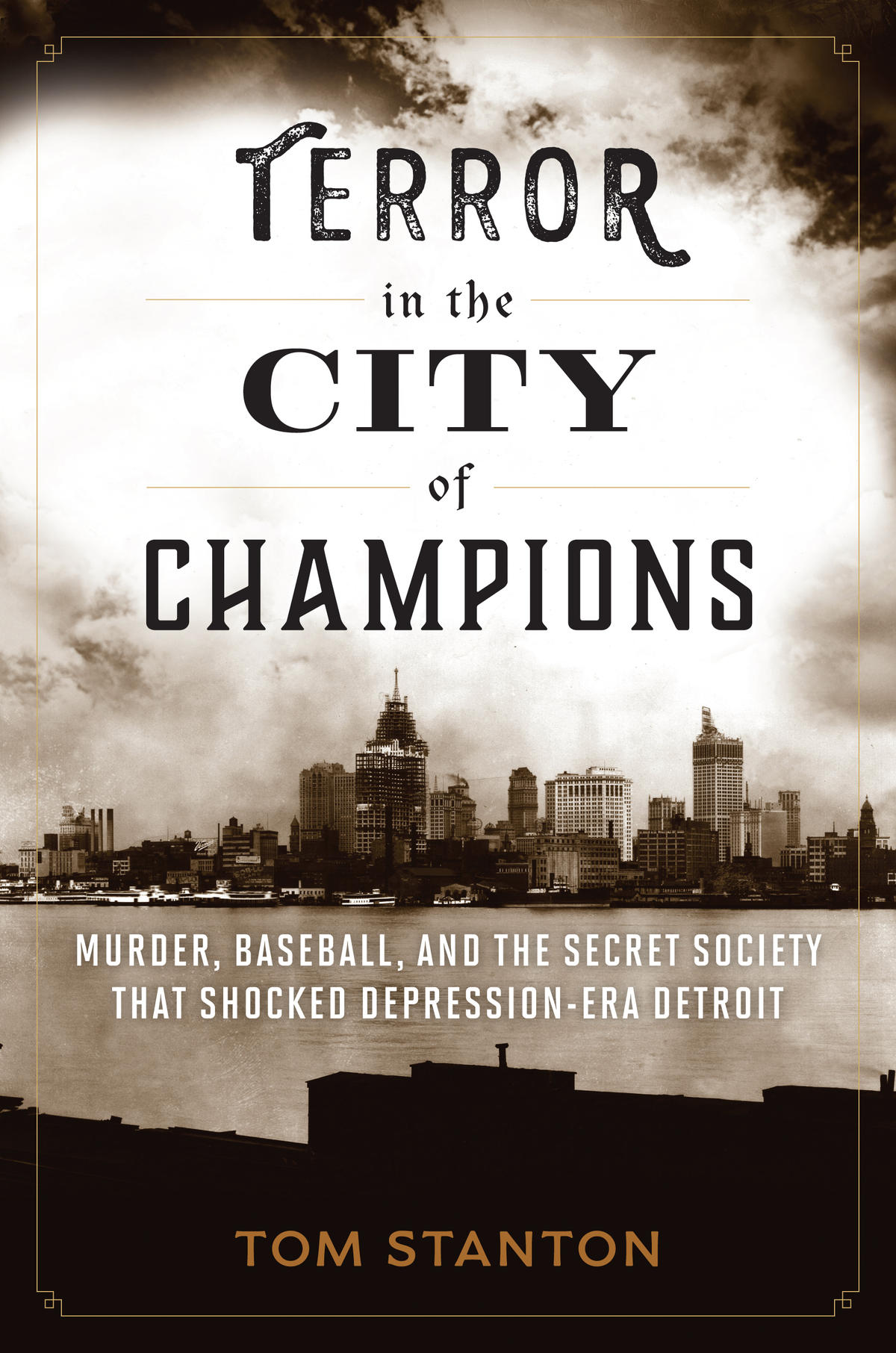by Zinta Aistars
for WMUK 102.1 FM
Southwest Michigan's NPR affiliate
Between the Lines is my weekly radio show about books and writers with a Michigan connection. It airs every Tuesday at 7:50 a.m., 11:55 a.m., and 4:20 p.m. (or listen anytime online), on WMUK 102.1 FM, Southwest Michigan's NPR affiliate. I am the host of Between the Lines.
This week's guest: Tom Stanton
Southwest Michigan's NPR affiliate
Between the Lines is my weekly radio show about books and writers with a Michigan connection. It airs every Tuesday at 7:50 a.m., 11:55 a.m., and 4:20 p.m. (or listen anytime online), on WMUK 102.1 FM, Southwest Michigan's NPR affiliate. I am the host of Between the Lines.
This week's guest: Tom Stanton
 |
| Tom Stanton at Ty Cobb's grave |
Some of the darkest periods of Detroit's history have gotten buried over time. ButTom Stanton brings much of it to light again in his seventh book, Terror in the City of Champions: Murder, Baseball, and the Secret Society that Shocked Depression-era Detroit(Lyons Press, June 2016). The book took the 16th spot on the New York Times’ Sports/Fitness Bestsellers list for July.
The book tells about the Black Legion, a secret terrorist organization in the 1930's similar to Ku Klux Klan that wrought corruption at every level in Detroit. Business, politics, high society — Stanton says all were darkened by the influence of the Black Legion.
“A lot of people are surprised to hear about the Black Legion,” Stanton says. “Back in its day, it was nationally known. People were familiar with it once it was exposed in May 1936. It was even more violent than the Ku Klux Klan. They were operating throughout the Midwest, particularly in Michigan, Ohio and Indiana, and they flourished in factory towns like Detroit, Pontiac, Flint and Jackson. The numbers were estimated in the tens of thousands of members.”
Stanton says Legion members were sometimes forced to join after extreme pressure. People were pulled into the organization throughlies and threats. The Legion sometimes threatened to harm their families if they refused to join.
Stanton says, “They were tricked into going to a meeting they thought was perhaps a barbecue or a card game, then finding themselves surrounded by white Protestant men in black robes and hoods with skull and crossbones insignia with guns pointed at them.”
But Detroit wasn’t just a place of darkness in the 1930's. As the Black Legion flourished, so did ...
LISTEN TO THE COMPLETE INTERVIEW. (14:37)

No comments:
Post a Comment